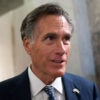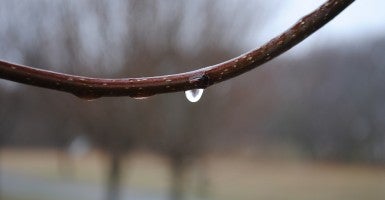Despite massive fiscal and monetary stimulus since the financial crisis, the economy continues to disappoint. The big news this past week was that the BEA revised its first quarter GDP estimate downward to reflect a 1% decline – far worse than its previous estimate of 0.1% quarter-to-quarter growth.
Why so bad? A popular explanation seems to be the weather. Fed Chair Janet Yellen is just one of the many economists touting this view. Recently she told the congressional Joint Economic Committee:
“Although real GDP growth is currently estimated to have paused in the first quarter of this year, I see that pause as mostly reflecting transitory factors, including the effects of the unusually cold and snowy winter weather.”
Weather? That’s the best a trained economist can do? Blaming these numbers on an unusually cold winter falls somewhere between mild avoidance and a complete cop-out. For starters, the GDP numbers are seasonally adjusted, so any “normal” winter-related slowdown is already accounted for as best as possible.
Statistically isolating only the extraordinary cold-weather impact is admittedly a nearly impossible task, but several basic comparisons show how unsatisfying the claim really is.
Let’s start with the components of GDP that were responsible for the decline. The two main culprits were the “gross private domestic investment” and “net export of goods and services” categories.
First quarter exports declined by 6%, while imports grew by only 0.7%, so the net figure dropped. Leaving aside the question of which winter phenomenon (Sleet? Snow? Icy roads?) shut down only one direction of the global supply chain, we can focus on gross private domestic investment (GPDI).
The GPDI category includes spending on residential housing, nonresidential structures, equipment, and intellectual property. On the surface, it makes sense that a harsh winter could cause a decline in this category. After all, it’s certainly harder to build a house in the middle of a snow storm. But, again, these effects have to be particularly bad; it’s always cold in the winter.
So, how harsh was this winter?
According to the National Climactic Data Center (NCDC), last winter was the 27th coldest on record since 1895. The anomaly from the average winter temperature was 0.99 degrees Fahrenheit.
Post WWII, the coldest winter on record (using this same measure) was the winter of 1978/1979. That winter didn’t cause a first quarter contraction in GPDI in 1979. Instead, GPDI increased 0.7%, led mainly by strong growth in equipment and intellectual property expenditures. Of course, first quarter 1979 is just one data point.
Of the 11 next coldest winters registered since the 1930s, first quarter GPDI increased in 10 of them. Put differently, in the 11 coldest winters of the modern era – all of which were colder than last winter – GPDI growth declined only once.
Of course, there are other ways to measure the severity of the winter, and all U.S. cities didn’t experience the same temperature declines. However, analyses using other historical measures of our most extreme winters do not show a clear extraordinary drop in first quarter GPDI.
We can also look to our north. Canada experienced an unusually cold winter too. Yet their first quarter 2014 GDP increased 0.3%. (Canada’s national accounts are not an exact match for the BEA categories in the US, but their “gross fixed capital formation,” which includes residential housing, did decline 0.9%.)
More directly, we can test for a statistical relationship between weather data and growth rates in GPDI and even its components. Admittedly, these tests give us only correlations, not causal impacts. Nonetheless, using the full-sample of NCDC data, I regressed first quarter GPDI growth rates on the anomaly from the mean temperature. I also regressed (separately) the nonresidential structures and equipment subcomponents of GPDI on the same temperature variable.
These results suggest there is no relationship, on average, between investment in any of these variables and extreme temperatures. Incidentally, I did find one paper which suggests there is a statistical relationship between weather and private nonresidential construction. That report, though, uses a smaller time frame and employs year-to-year change data (instead of quarter-to-quarter changes). By design, those data do not explain quarter-to-quarter variation in GDP.
Overall, the notion that weather constitutes a solid explanation for the drop in first quarter GDP or GPDI is a pretty tough sell.
Looking at quarterly growth rates for 2013, a much better question to ask is: What caused 18% and 13% growth in investment in nonresidential structures for the second and third quarters of 2013, respectively. It would also be useful to explain the 11% growth in spending on nonresidential equipment in the fourth quarter of 2013.
All of these large increases in growth rates were followed by decreases, so these unusual increases could actually better explain the first quarter drop than the weather.
Expiring depreciation benefits could be the culprit – it seems likely that business owners and managers took advantage of the expiring Section 179 and bonus depreciation provisions as 2013 came to an end. (There have been several changes to these provisions since 2008 which likely impacted, at the very least, the timing of purchases in these categories.)
Given the enormous amount of fiscal and monetary stimulus we’ve experienced since the financial crisis, an even better question for Janet Yellen and her government colleagues is: Why hasn’t GDP (and GPDI) shown consistently solid growth?
In 2007 the prime rate of interest was more than 8%, but it’s been 3.25% since 2009. A similar story can be told with most short-term (and many longer-term) rates. With these low rates, all else constant, borrowing to undertake long-term projects must have looked more profitable to corporate managers. (Especially in NPV terms.)
So something – or some things – must have been holding economic activity back. The Fed Chair needs to explain what these issues are and why stimulative polices haven’t produced better results. She should probably start by scratching the weather off her list.
Originally posted on Forbes.






























